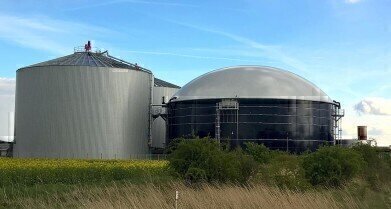Green Energy
4 Examples of Decarbonisation
May 21 2022
With global warming causing climate change and increased frequency of extreme weather events, there has been a growing awareness of the urgent need to decarbonise our economies. This must take place across all sectors, from energy and transportation to industry and agriculture.
But while decarbonisation might be a popular buzzword among politicians and policymakers at the moment, understanding what it means in concrete terms can be a trickier challenge. With that in mind, here are four examples of how decarbonisation can be implemented in a variety of different industries, curbing the emissions generated by them and cleaning up the world’s environmental profile in the process.
Electrification
Whether it’s the heat used to warm our homes or the fuel used to power our cars, electricity could represent a major upgrade on the fossil fuels upon which we currently rely. Sophisticated technologies like heat pumps can have a huge impact on the volume of emissions generated by the heating and cooling industry, while the rising popularity of electric vehicles (EVs) is testament to the contributions that they can make towards a cleaner tomorrow. Of course, this electrification of heat and transport must be powered by renewable energy, otherwise any gains made will simply be displaced.
Hydrogen
As well as EVs, there is also the option to pursue hydrogen fuel-cell electric vehicles (FCEVs) to make the transportation industry more sustainable. Indeed, skilling up for hydrogen mobility has been taking place in countries around the world, including places as diverse as Germany, Japan and the USA, with fuelling station infrastructure on the increase. Meanwhile, hydrogen’s value as a fuel feedstock in other sectors, such as in industrial furnaces or as a reactant in chemical processes, is another promising area of research.
Biomass
Fossil fuels like coal, oil and gas are highly damaging for the planet, but are still responsible the lion’s share of energy generated on the planet. Transitioning to renewable energy should be the ultimate goal, but bridge fuel sources such as biomass (like the use of charcoal instead of coal or biogas instead of gas) could provide the perfect support mechanism that industries need to solve intermittency issues. Although this option has proved slightly controversial in the past, new technologies are enabling the optimisation of biogas plants, thus enhancing its environmental credentials.
CCS and CCU
Carbon capture and storage (CCS) is the practice of extracting harmful gases (such as carbon) from effluent streams at the point of emission, then burying them deep underground. In this manner, existing methods of energy generation and industrial processing can be allowed to continue, but without the same attendant emissions problems. Meanwhile, carbon capture and usage (CCU) follows the same principles as CCS, but tries to find a practical use for the gas instead of injecting it underground. This includes converting it into ethanol, using it in refrigeration systems or flushing out natural gas reserves with it.
Events
IWA World Water Congress & Exhibition
Aug 11 2024 Toronto, Canada
Aug 25 2024 Stockholm, Sweden and online
Sep 03 2024 Mexico City, Mexico
Sep 03 2024 Mexico City, Mexico
Sep 03 2024 San Diego, CA, USA














